Painting Keeps Us Safe!
Painting is a great way to freshen up the look and feel of a house or workplace.
It can make an old place new again or give a nice background to all your posters, wall hangings, paintings, family photos, and other beautiful things you want to put up on your walls.
Painting doesn’t just benefit the people painting.
Painting also benefits the people who live or work in the painted surroundings!
Why?
Because painting keeps us safe!
A good quality paint job properly seals walls, ceilings, doors, and other areas, provides a surface that looks attractive and is easy to clean.
However, even a straightforward activity like painting has safety concerns.
Painting has both physical and health hazards.
As a start, you should always follow proper clean-up, storage, and disposal procedures.
There are plenty more safety considerations when using and applying paint.
Here are 9 painting safety tips that will help keep you safe and healthy:
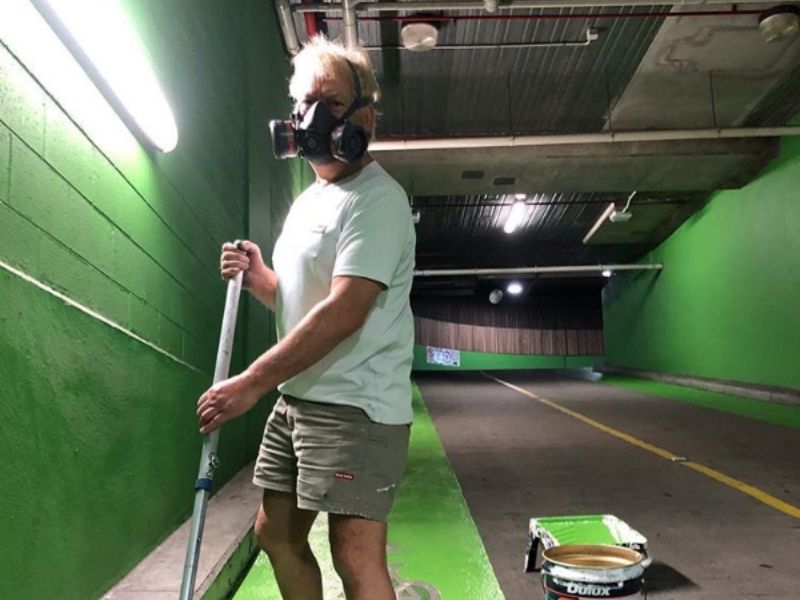
1) Prepare The Room for Safety
The first painting safety tip you should practice is preparing the room for painting.
Clean up any rubbish from a room before painting it. You don’t want to paint in a messy place.
You also don’t want painting materials getting mixed in with dirt or debris.
Do a quick sweep-through of your painting area. Make sure there is nothing you can step or trip on like old nails or small surfaces that can easily be accidentally bumped into (like desk legs).
2) Paint Carefully and Slowly to Prevent Slipping
Slipping can result in some serious injuries when painting.
It’s easy for someone to fall downstairs or hurt themselves on sharp objects when slipping or tripping.
Slipping also happens when painting uneven surfaces.
So, to prevent slipping while painting, spread out a sturdy canvas drop-sheet on the floors you are painting. This will protect your painting surfaces and protect you from slipping hazards.
Try painting and moving around the room slowly so that slip-ups become less likely to happen.
3) Keep Away from Lead Paint
Paint containing lead was used in many Australian homes before 1970.
However, houses built after 1970 might still contain paint with more than 1 per cent lead, particularly if old paint, industrial paints, or marine paints have been used.
If you suspect there might be old paint with lead content, make sure you have a professional painter skilled in lead paint management address this.
Trained professional painters can do tests to determine a paint’s lead content, and they have the right tools, safety equipment and techniques to remove it or paint over it.
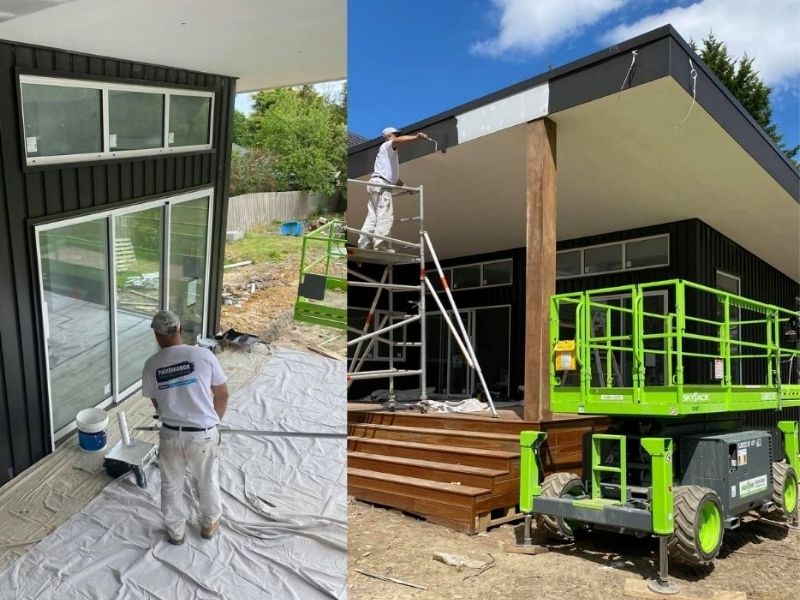
4) Choose Safe Paints
Paints have a variety of ingredients and chemicals in them.
You should know the safety risks of the paint you purchase.
Read and follow the safety recommendations mentioned on the paint label.
If a paint product has no label, don’t buy it.
We recommend you ask for a Safety Data Sheet (SDS) for each paint product from the manufacturer or paint supplier.
Safety Data Sheets indicate possible hazards of a paint product. They contain advice on how to handle the product safely, precautions that should be taken before using the paint, storage guidelines, and emergency procedures.
As an example, extra care needs to be taken with materials such as paint strippers containing methylene chloride.
Methylene chloride is a suspected human carcinogen.
It is highly toxic.
It can cause permanent damage to skin and eyes, headaches, nausea, vomiting, numbness, tingling, light-headedness, worsen angina, loss of co-ordination, diarrhoea, abdominal pain, convulsions, unconsciousness, damage to lungs, liver function and kidneys.
5) Paint Health Hazards to Avoid
If you inhale too much paint vapour or mist, you may experience short-term physical problems.
These can include eye irritation, sore throat, cough, runny nose, fatigue, or dizziness.
Paint may cause skin problems, such as short-term rashes or swelling.
You should wash your eyes with water for at least 15 minutes after contact with paint, solvents, or thinners, and get medical attention.
There is always the risk of long-term, chronic illnesses that develop over time.
These may include problems with the digestive or central nervous system, and damage to the liver, kidneys, or lungs.
Beware of being desensitized to a paint product, especially with certain paints called polyisocyanates.
Once you become sensitized to a substance, you risk serious skin and respiratory problems, even possibly permanent lung damage.
Metal pre-treatment paints often contain phosphoric acid.
This can include hazards due to the material being corrosive. It will burn skin and eyes and may result in permanent damage.
6) Avoid the Sun During Painting to Prevent Sunburn and Overheating
Painting under the sun for prolonged periods can cause serious problems during painting.
When painting in sunlight for extended periods of time, people can get overheated and dehydrated.
Painting in direct sunlight can cause sun stroke and heat exhaustion.
When the weather is warm, keep painting sessions short to prevent your body from over-heating and feeling ill.
Wear a hat, sunscreen and cover up if working under the sun.
Drink water regularly.
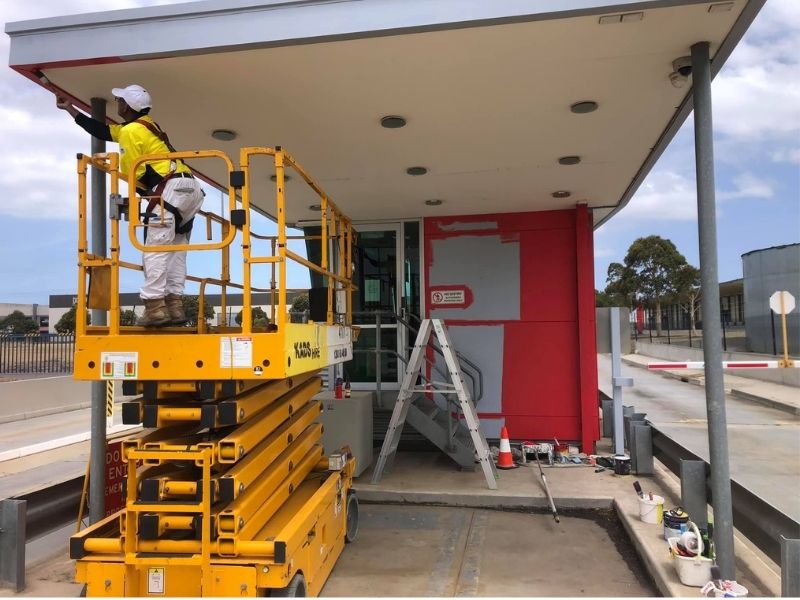
7) Use Safe Tools and Equipment
Using painting equipment and tools that are designed for painting jobs is a must.
Don’t use normal household implements like knives or forks when painting to open tins or stir paint. This can lead to nasty accidents.
Always make sure you have quality painting equipment that works before beginning a painting session.
If you’re working higher up, you should avoid falls.
Use a sturdy ladder. It should be balanced and strong enough to support your weight.
Check your ladder for cracks and splits before you climb.
If it’s a metal or fibreglass ladder, check for bends and breaks.
Never use a defective ladder.
Make sure your ladder sits firmly on the ground or floor.
If one foot of your ladder is lower than the other, raise up, or level the surface with a firm piece of material. Don’t use bricks or boxes.
Your ladder should lean on a solid surface – never on glass.
The angle of ladder incline should be comfortable and safe. Never position your ladder close to open walkways or doors.
Steps or rungs of your ladder should be free of paint, mud, grease, or any other slippery material.
Remove any slippery material from the sole of your shoes before you climb up the ladder.
When climbing up your ladder, face forward. Use both hands to keep a firm grip on the rails.
If you need to carry heavy items up the ladder, climb up first, and then pull up the item.
You might consider a ladder bracket scaffold where you are not working above a 2-metre height.
Ladder bracket scaffolds are made from a pair of single or extension ladders with brackets to support scaffold planks.
The horizontal distance between the brackets should not be more than 2.4 metres and no more than one person should be supported on the scaffold.
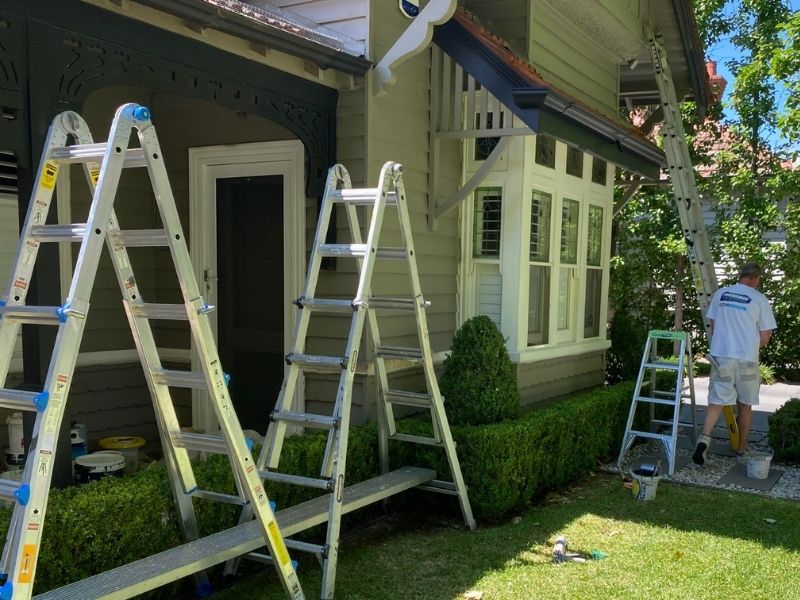
8) Keep Solvent Safe
Painters use solvents, which are liquids to dissolve other substances.
Solvents will evaporate and form vapour when containers are left open. Solvent vapours can be breathed in and can be a health hazard.
Store solvents in strong containers, and keep containers sealed when not being used.
Many solvent vapours are highly flammable and can lead to a fire starting.
Not all solvents are flammable, however.
You should know what you are dealing with. This is vital to the proper methods of handling these and other chemicals. It is recommended you:
- Reduce the volume of flammable solvents present as far as possible.
- Prevent spills and leaks.
- Remove sources of ignition such as naked lights, unsuitable electrical equipment, static electricity hazards, hot surfaces and mechanical friction.
- Reduce the vapour concentration by ventilation/extraction systems.
Solvents can be ingested, breathed in as vapour, or absorbed through the skin. They can cause acute or chronic poisoning and skin rashes.
We advise you to use hand cleansers – do not wash your hands in a solvent.
You should also use properly designed protective equipment and wear protective gloves and clothing where necessary.
Another potential hazard is explosion. For example, a closed paint container that’s exposed to high heat could explode.
Store paint and solvent containers away from heat.
Here are some more tips about using paint solvents safely:
- Protect your skin and eyes.
- Prevent inhalation
- Avoid working in a confined space.
- Store solvent safely, away from heat.
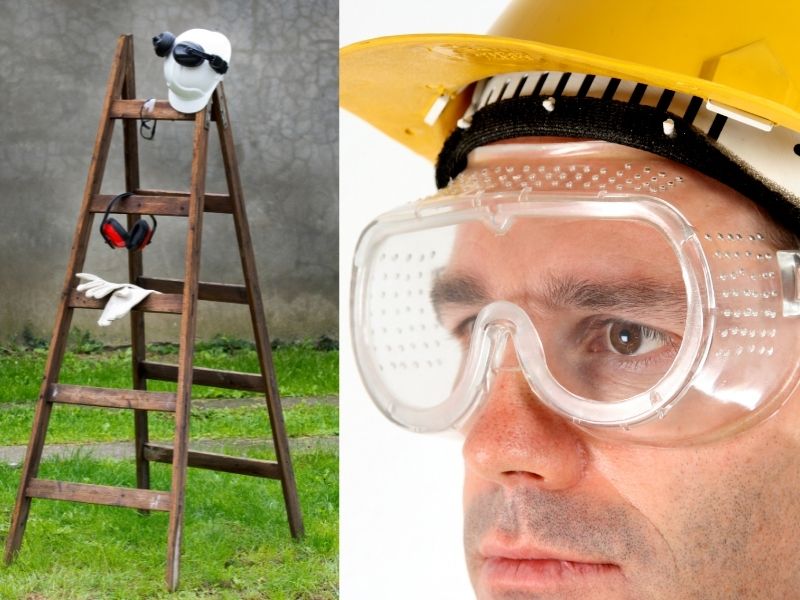
9) Protect Yourself from Paint Hazards
You should only paint in a well-ventilated area.
Good ventilation is important, whether you’re painting in an office or home. Good ventilation will reduce the chances that you’ll inhale harmful vapours.
Make sure you avoid ignition sources, which is particularly important in a paint spray booth.
Spray painters may breathe in chemical vapours as they spray.
Chemicals from spray paint can be absorbed by the skin, or the painter may inject the chemicals into their skin if using high-pressure painting equipment.
You should properly maintain the spray gun, ensuring that filters and overspray are clean.
Even with good ventilation though, many paints are very flammable.
Do not allow smoking or any source of flame anywhere near where there is painting.
Always use proper personal protective equipment (PPE).
These may include gloves, overalls, long-sleeved shirts, safety goggles and / or other face protection.
Spray painting in a booth usually requires respirators as well as specific hazard training.
Protective skin creams can help protect your skin from irritation. They can make it easier to clean up using soap and water instead of irritating solvents, which should always be avoided where possible.
When spray painting, always spray with the wind.
Use tarpaulins or screens to protect other people from the spray, and never spray toward one another.
It’s also recommended to use gun extenders to reduce exposure.
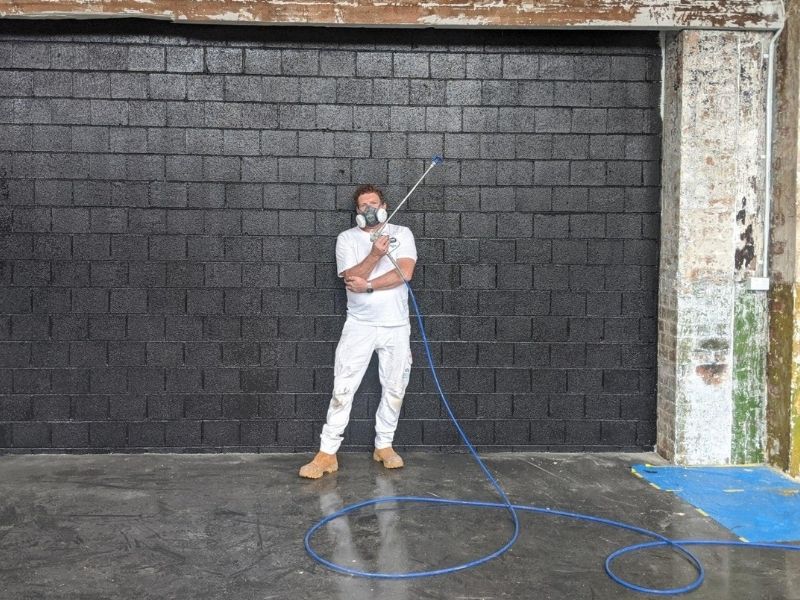
Make Safe Painting a Priority
You should always make safety a priority, especially when painting.
At Paintenance Melbourne, the health and safety of our workers and customers is paramount.
We adhere to the recommendations and specifications set out by Australian Painting Standards AS2311 Painting of Buildings 2017 and according to the Standards of Painting for the Surface Coatings Industry.
All Paintenance Melbourne staff are properly trained in OH & S practices.
For example, we follow strict COVID-19 safe protocols as prescribed by the Master Painters Association of Victoria and Tasmania.
Paintenance Melbourne uses only double-vaccinated staff, keeps a strict workplace register of all on-site workers, provides location-specific QR codes, and organises COVID-19 work-safe permits with a COVID-safe plan overseen by a Covid Marshall.
If you have any concerns with the safety of your next painting job and would rather have expert professionals take all the worry off your shoulders, then hire a Master Painter to get the job done safely and efficiently.
Contact Jonno Lloyd at Paintenance Melbourne today, to discuss your painting project on: 0404 227 330.
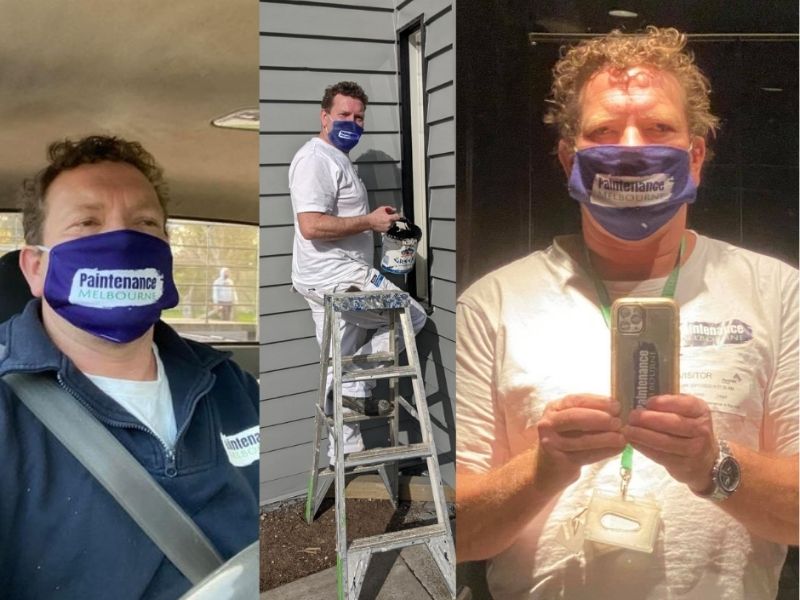
Article References:
Resene Hazards in the Preparation of Painting


